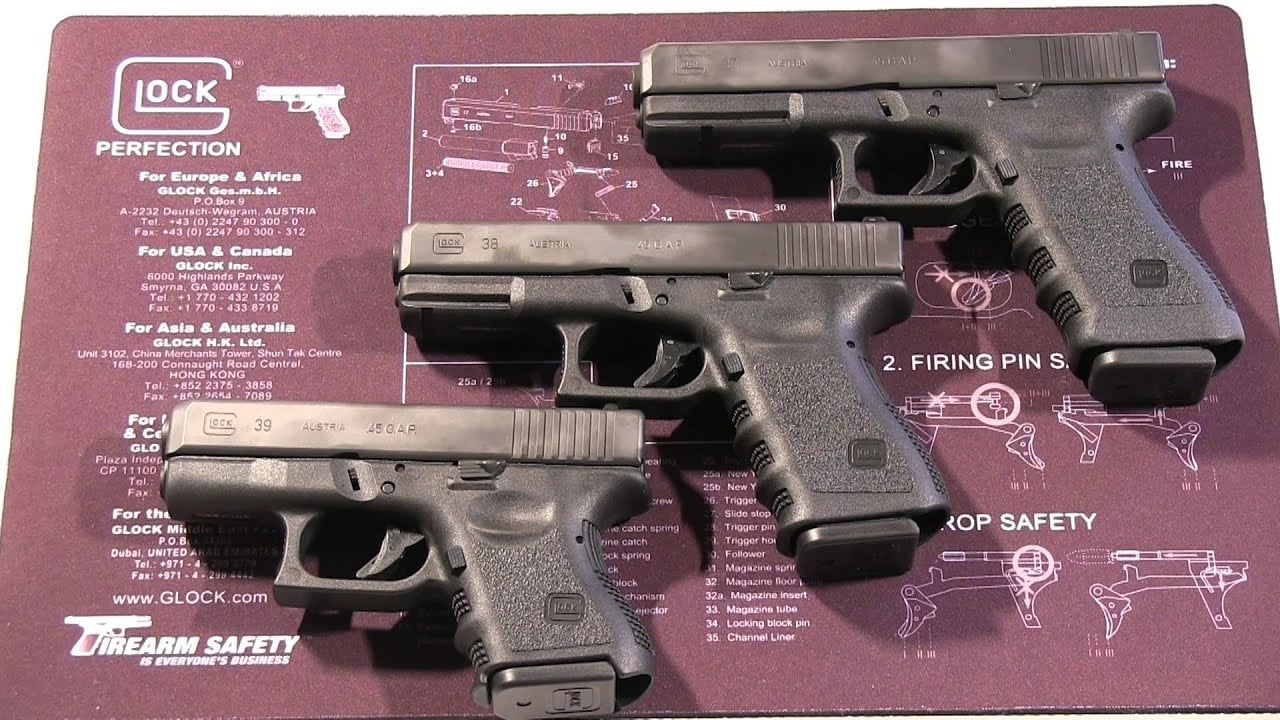Many Glock models use mainstream calibers and similarities in design. The Glock 38 .45 GAP is different. This gun uses a caliber that’s non-mainstream and indeed a cartridge that Glock itself had a hand in designing: the Glock 38 – most definitely not a .38 Special or a .38 Super – in the comparatively obscure .45 GAP caliber.
.45 GAP Cartridge History and Glock 38
The .45 GAP (Glock Automatic Pistol) cartridge dates back to 2003; it was designed to be shorter in length than a .45 ACP – indeed using the same size bullet – while maintaining a similar level of ballistic energy. It’s actually shorter than a standard 9mm cartridge – overall length of 1.070 inches and a case length of 0.755 inches – but still generates up to 600 foot-pounds of muzzle energy. In other words, .45 caliber bullets in 9mm frame-sized guns, thus being more ergonomic for smaller-handed shooters. Yes, I know, the .40 S&W was supposed to be the ideal compromise in that regard – “.45 muscle and 9mm firepower” as gun writer Dick Metcalf declared back in 1990 – but even though math was my academic Achilles heel, I can still ascertain that 40 is a smaller number than 45.
So then, did the cartridge succeed? Well … yes and no. Law enforcement veteran and self-defense guru Massad F, Ayoob explains:
“New York State Police were the first big agency to adopt it. Soon 10 percent of our state police agencies had armed their troopers with the GAP, including Pennsylvania, Georgia, South Carolina and Florida. All reported excellent results in actual shootings … The .45 GAP was on a fast track … Today, however, 80 percent of those bellwether LE agencies have abandoned it. Half of those, PA and NY, went back to .45 ACP, while the other half, GA and SC, went to the 9mm. What happened? There’s more than one answer.”
A big part of it was dollars and sense; the .45 GAP is more expensive than either 9mm of .45 ACP. While the current ammo drought and accompanying price inflation that has been with us since 2020 is obviously fresher on gun enthusiasts’ minds, it’s easy to forget that there was a similar shortage back in 2012 … and non-mainstream calibers like the GAP were affected more than the more “conventional” calibers. Second of all, Glock did its own homegrown caliber a disservice by making .45 ACP pistols that were more ergonomically friendly such as the Glock 21SF (Short Frame); to quote Mr. Ayoob again, “In essence, GLOCK’s own .45 ACPs were making their .45 GAPs redundant.”
Then there were the vast improvements in the ballistic performance of the 9mm, thanks to cartridge design such as Speer Gold Dot, Remington Golden Saber, and CorBon DPX, which led to very little difference in real-world effectiveness across the 9mm, .40 caliber, and .45 caliber spectrum … and the 9mm still offered the advantages of higher capacity, lesser recoil, and lower cost than the .45 GAP.
Hence the GAP guns sort of became the “black sheep” of the Glock family. However, the caliber and the guns associated with it aren’t quite dead yet. To quote Mas Ayoob one more time: “Though it’s fading, the .45 GAP isn’t gone. It remains an extremely viable choice for the user who wants the reassurance of the proven .45 caliber bullet, and a pistol fitting most hands well — can keep a goodly stock of ammo in their armory.”
Glock 38 Specifications
As was the case with its 9mm Parabellum, .40 S&W, and .45 ACP offerings, Glock’s first foray into the .45 GAP market was a full-sized pistol, the Glock 37. Essentially, the Glock 38 is to the G37 what the G19 is to the G17, i.e. the more compact, mid-sized pistol in its specific caliber category. (Accordingly, the manufacturer also makes a “baby Glock: in the GAP caliber, that being the G39.)
According to Glock’s official info page, “The GLOCK 38 is a compact sized 45 GAP offering carrying comfort and excellent performance in accuracy and power.” Overall length is 7.36 inches, barrel length is 4.02 inches, empty weight is 24.16 ounces, and weight with a fully-charged factory standard 8-round magazine is 31.75 ounces.
Personal Shooting Impressions: Pros and Cons
I bought my own G38 back in 2005 when the .45 GAP was still a hot commodity, and I admittedly got caught up in the hype a bit. I found the ergonomics to be quite pleasing, and the fact that it had a .45-sized bore whilst fitting my hand and concealing on my person comfortably was just icing on the cake, and pretty soon I was using it for home defense, CCW, and IDPA-style competition matches alike. The recoil, muzzle flash, and muzzle blast were quite stout – “That son of a b**** is loud!” my friend and fellow competitive shooter Mike Cusanelli commented at the time – but certainly not prohibitive, and 7-yard head shots and 25-meter center of mass shots were a breeze.
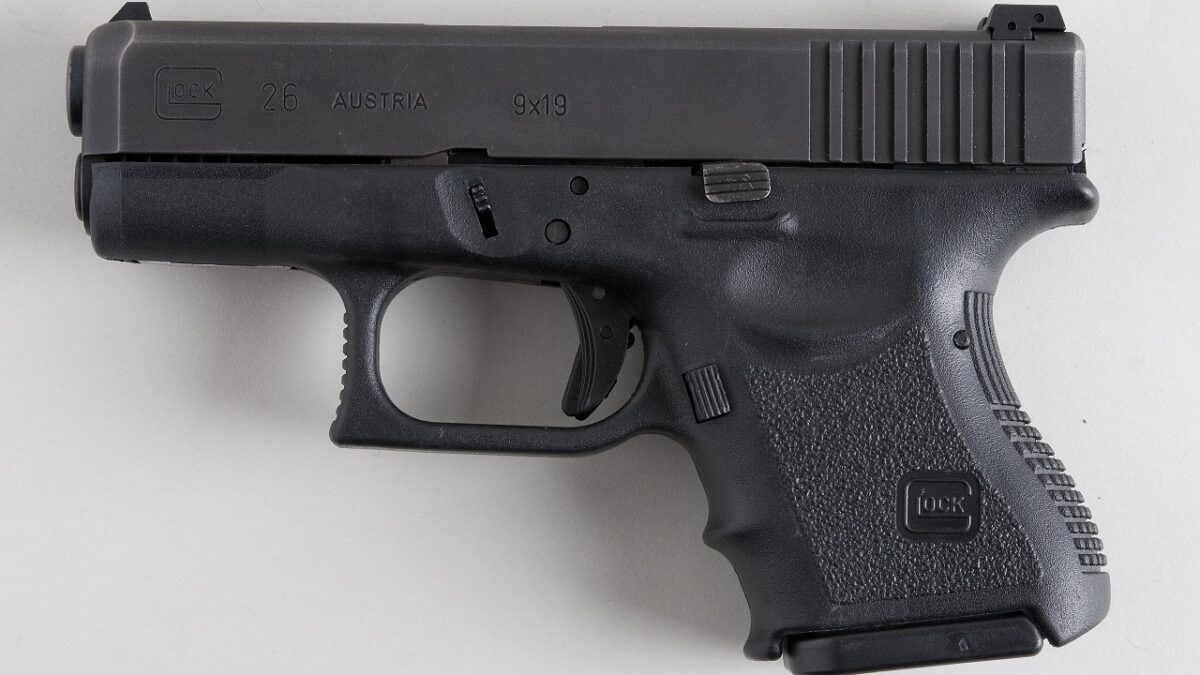
Glock G26. Image Credit: Creative Commons.
Eventually, however, sentiment gave way to pragmatism. As it turned out, the year after I bought my G38, I ended up joining U.S. Customs & Border Protection (CBP), whereupon my duty-issue HK P2000 .40 S&W was the only handgun authorized for both on- and off-duty carry. Three years later, I transitioned to sister agency U.S. Immigration & Customs Enforcement (ICE) as a Special Agent, where I was issued the SIG P229 DAK .40 S&W and was allowed to carry a Glock 26 9mm as a backup piece … but still, no .45 GAPs need apply. Soon my beloved G38 got relegated to “safe queen” status.
Bottom Line: Yea or Nay?
My overall impression of the Glock 38 and the .45 GAP is a positive one, so I can recommend it, but with a caveat emptor: be ready to contend with relative scarcity and expense of ammo, especially in this day and age.
Glock Photo Essay
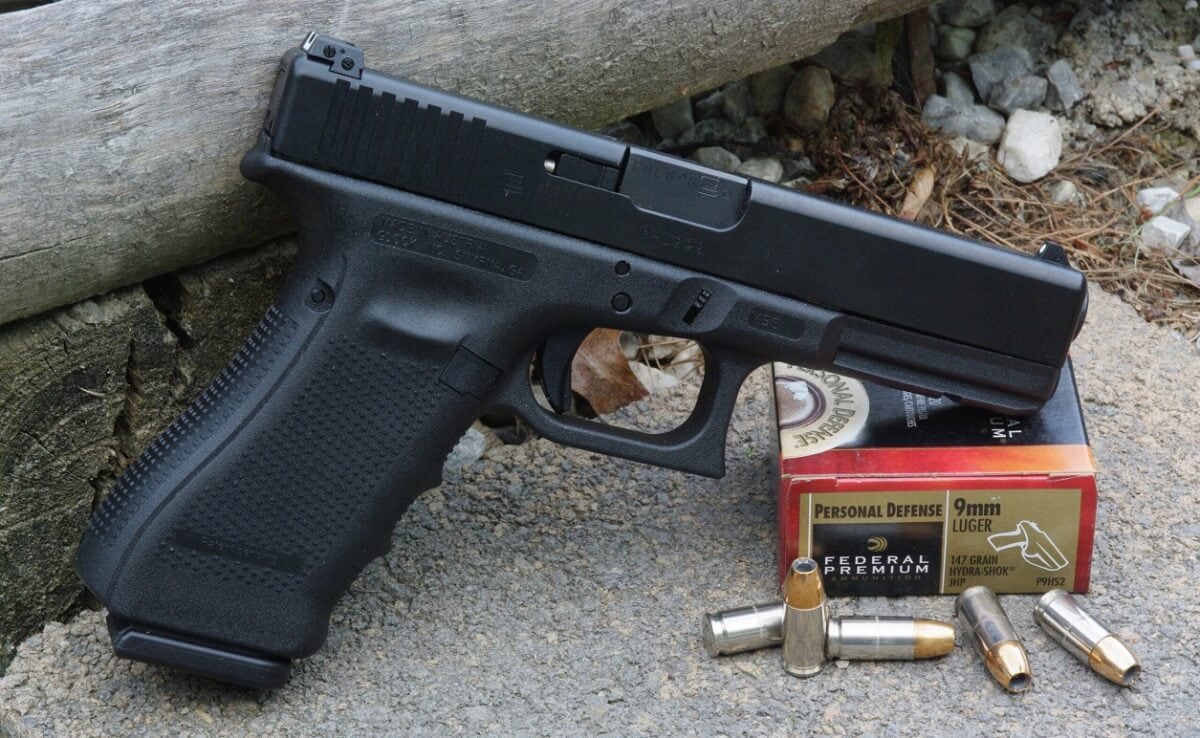
Image of a Glock 17 gun. Image Credit: Creative Commons.
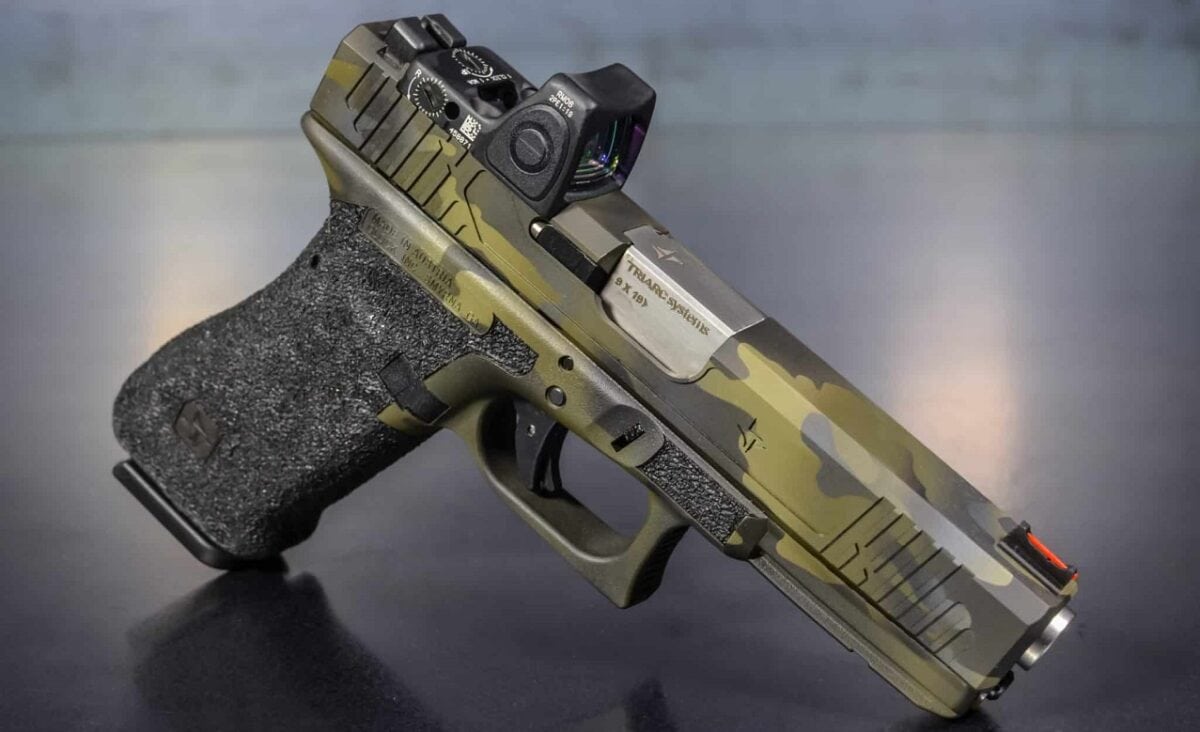
Glock 17. Image Credit: Creative Commons.
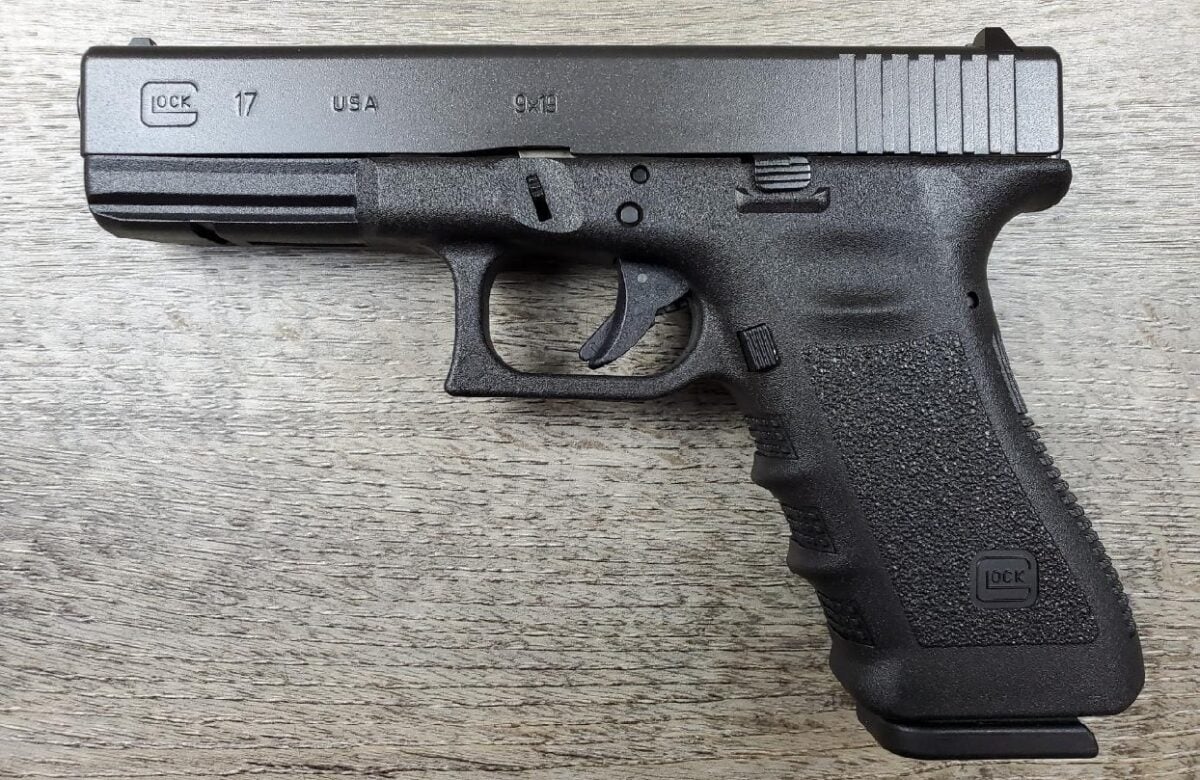
Image: Creative Commons.
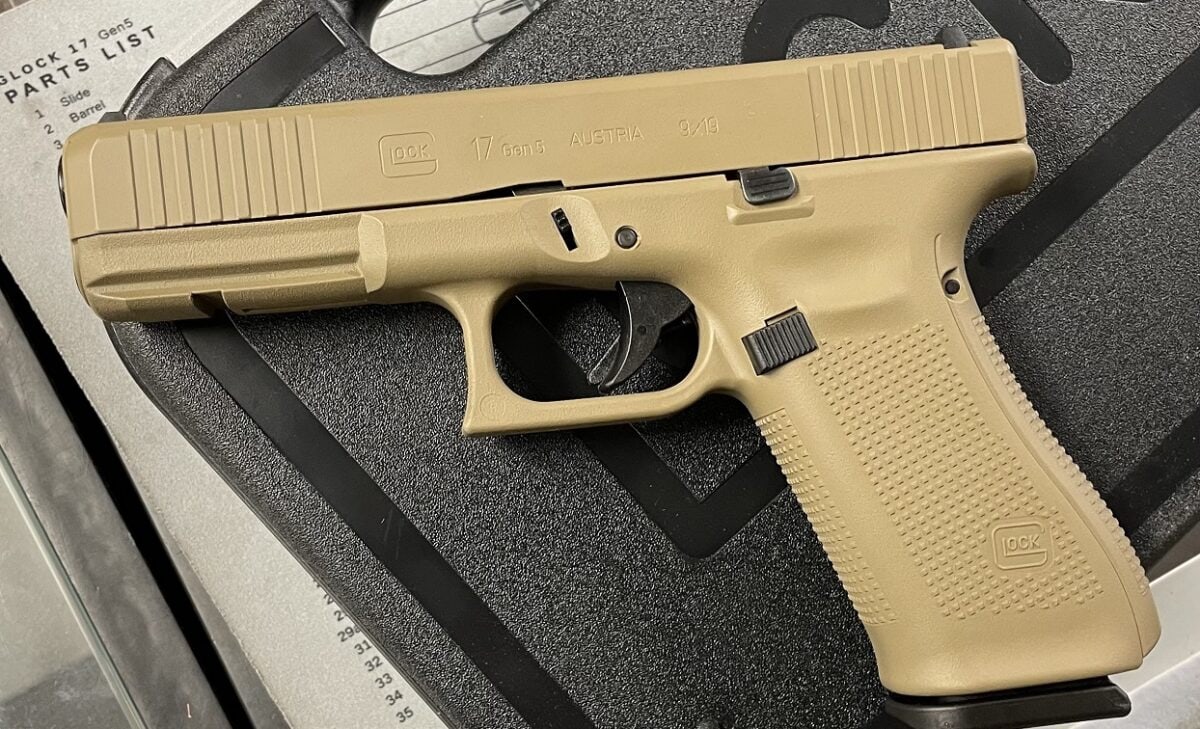
Glock 17. Image Credit: Creative Commons.
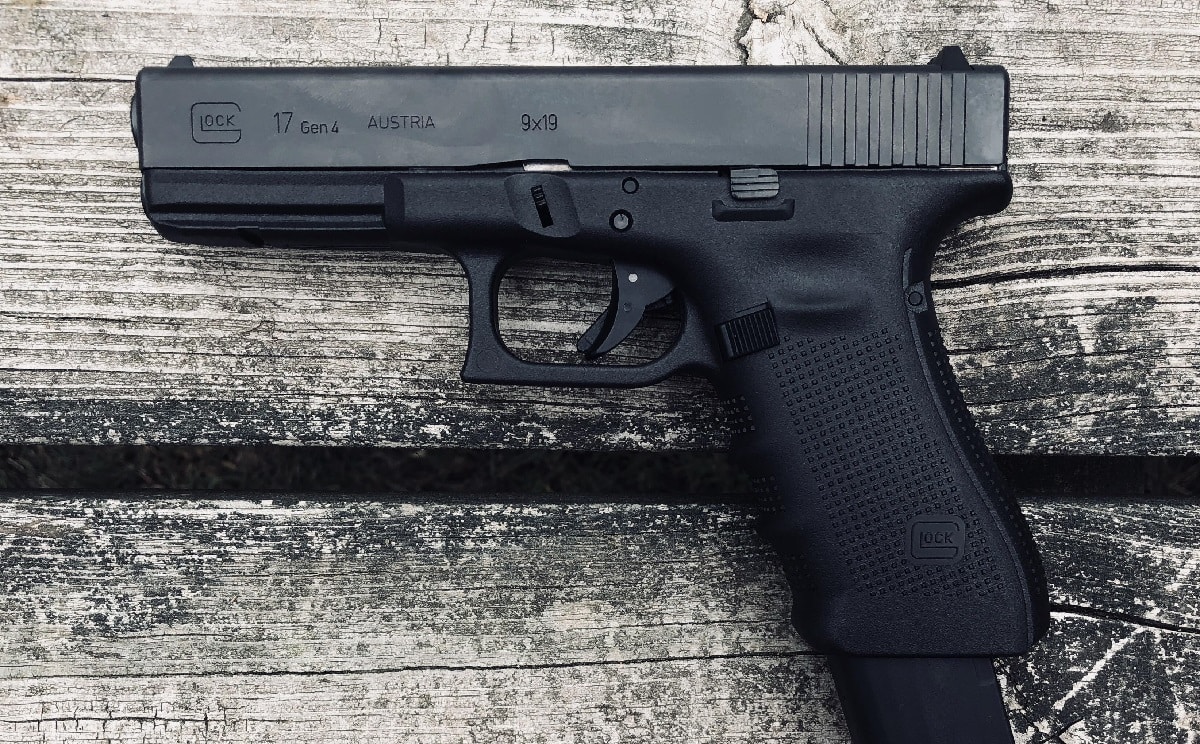
Christian D. Orr has 33 years of shooting experience, starting at the tender age of 14. His marksmanship accomplishments include: the Air Force Small Arms Ribbon w/one device (for M16A2 rifle and M9 pistol); Pistol Expert Ratings from U.S. Customs & Border Protection (CBP), Immigration & Customs Enforcement (ICE), and the Federal Law Enforcement Training Center (FLETC) Criminal Investigator Training Program (CITP); multiple medals and trophies via the Glock Sport Shooting Foundation (GSSF) and the Nevada Police & Fires Games (NPAF). Chris has been an NRA Certified Basic Pistol Instructor since 2011. In his spare time, he enjoys (besides shooting, obviously) dining out, cigars, Irish and British pubs, travel, USC Trojans college football, and Washington DC professional sports.

